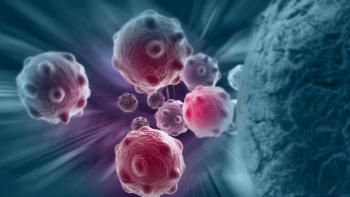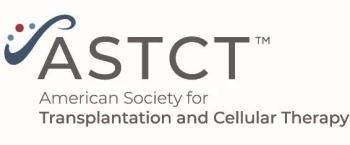
Novel Quadruplet Therapy Shows Promise in Multiple Myeloma
In this interview with Charlotte Pawlyn, MB, BChir, PhD, she discusses results of the Myeloma XI study, which tested a novel quadruplet therapy for patients with newly diagnosed multiple myeloma.
Today we are speaking with Charlotte Pawlyn, MB, BChir, PhD, a multiple myeloma clinician and researcher at the Institute of Cancer Research in London, United Kingdom, about the results of a large clinical trial that tested a novel quadruplet drug combination as an induction therapy for patients with multiple myeloma. Dr. Pawlyn
-Interviewed by Anna Azvolinsky
OncoTherapy Network: Dr. Pawlyn, can you tell us about the patients that were enrolled in the Myeloma XI trial and what the current therapy options are for these patients?
Dr. Pawlyn: Sure. Myeloma XI recruited patients with newly diagnosed multiple myeloma of all ages from 100 centers throughout the United Kingdom. There were very few exclusion criteria for the study, and so patients were very representative of the general population of myeloma patients that we see in the myeloma clinics throughout the U.K. There were different pathways in the study, depending on whether or not patients were eligible for high dose therapy and autologous stem cell transplant. Patients’ eligibility for transplant were determined by their local investigator, avoiding strict age limits but relying on patient performance data, comorbidities, and patient preferences. So all together, across all pathways of the study, we recruited over 4,000 patients. Standard of care induction for patients at first diagnosis in the United Kingdom is generally with proteasome inhibitor therapy-bortezomib combinations or combinations using the immunomodulatory agents thalidomide, or both.
OncoTherapy Network: What is the novel quadruplet therapy tested in this trial and what was the design of the trial?
Dr. Pawlyn: Patients receiving the novel quadruplet therapy were all in the transplant-eligible pathway of the trial. They were randomized to receive the quadruplet, which combines the novel proteasome inhibitor carfilzomib, along with the second-generation immunomodulatory agent lenalidomide, cyclophosphamide, and dexamethasone (KCRD), or they received one of two triplets (either cyclophosphamide, thalidomide, and dexamethasone or cyclophosphamide, lenalidomide, and dexamethasone). Patients who received a triplet therapy and did not achieve a complete response or a very good partial response as their maximal response then had the possibility of further induction therapy prior to transplant with a bortezomib-based triplet. All patients had a subsequent randomization after transplant to lenalidomide maintenance or no further therapy.
OncoTherapy Network: What did the study find in this latest analysis?
Dr. Pawlyn: The results that I presented at the European Hematology Association annual meeting showed that patients achieved deeper and faster responses with the carfilzomib/lenalidomide quadruplet compared with an immunomodulatory agent–based triplet. This difference was seen after the first induction regimen where 80% of patients achieved a very good partial response or complete response with the KCRD quadruplet compared with 61% of patients for the lenalidomide triplet and 53% for the thalidomide triplet. These differences in response persisted after autologous stem cell transplant; the depth of response also persisted across genetic risk groups, regardless of whether patients had standard-risk, high-risk, or ultra–high-risk disease. Importantly, we found that the quadruplet regimen was very well tolerated and didn’t effect patients’ ability to immobilize stem cells for transplant.
OncoTherapy Network: Can you put these results into context? Are these practice changing results? How do you see this indication therapy being used in the clinic?
Dr. Pawlyn: We’ve known for a while that combining agents is likely to be more effective in myeloma given the clonal heterogeneity that we see in the disease, so giving agents with different mechanisms of action at the same time is likely to be more effective at eradicating subclones and prolonging remissions. However, increasing drugs in combinations comes at a price for patients in terms of increased side effects and toxicity. Carfilzomib is a new generation proteasome inhibitor and other studies have demonstrated less peripheral neuropathy compared with bortezomib. This gave us the opportunity to combine drugs while aiming to limit toxicity. I think that the results of this large study looking at the combination of carfilzomib and lenalidomide upfront are really encouraging in that we see such impressive response rates, with 80% of patients achieving a complete response or very good partial response at the end of induction. Moving forward, we hope that these results will translate into improved progression-free and overall survival for patients. If so, it will support of the use of this regimen in transplant-eligible myeloma patients upfront.
OncoTherapy Network: Thank you so much for joining us today, Dr. Pawlyn.
Dr. Pawlyn: Thank you!
Newsletter
Stay up to date on recent advances in the multidisciplinary approach to cancer.

















































































